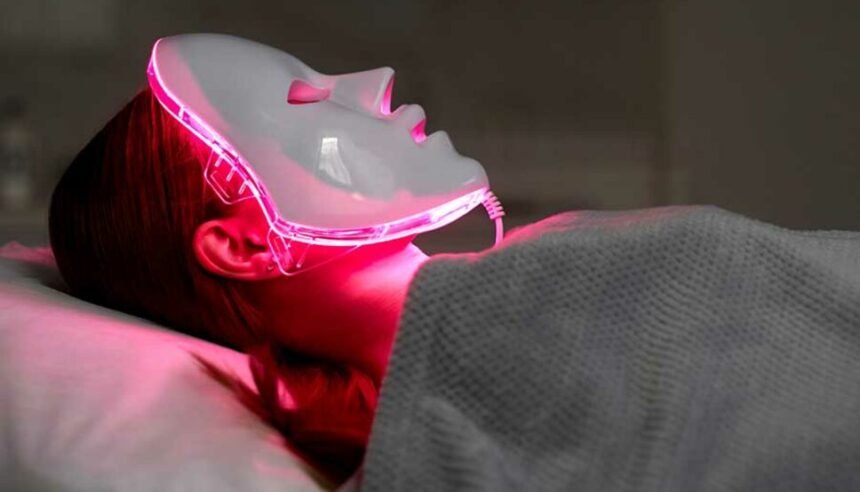When we think about the tools of the professional house cleaning service, our minds conjure images of industrial-strength vacuums, microfiber cloths, and an arsenal of eco-friendly (or potent) cleaning solutions. The last thing one might picture is a serene-looking panel emitting a soft, crimson glow. Yet, an unconventional tool is finding its way into the wellness routines of many, including those in physically demanding professions: red light therapy (RLT).
The question itself seems almost paradoxical. How could a non-invasive light treatment possibly impact the grueling, physically intensive world of house cleaning services? The connection isn’t that RLT will scrub your tubs or polish your floors for you; rather, its potential lies in supporting the most vital tool in any cleaner’s arsenal—the human body itself. The immense physical load of cleaning—the constant bending, lifting, scrubbing, and reaching—takes a cumulative toll, and it is here, in the realm of recovery and resilience, that red light therapy might offer a surprising and powerful form of support.
The Invisible Physical Toll of a Clean Home
To understand the potential benefits, we must first acknowledge the sheer athleticism required of professional cleaners. It’s a profession characterized by repetitive motions, sustained postural strains, and the frequent use of fine motor skills under pressure. This can lead to a cascade of physical challenges: inflamed shoulder joints from overhead wiping, aching lower backs from bending to clean baseboards, stiff wrists from wringing cloths, and general muscle fatigue that can compromise both performance and safety over a long workweek. This isn’t merely about feeling tired; it’s about the micro-injuries and inflammation that, if left unaddressed, can lead to chronic pain, burnout, and extended time away from work.
How a Beam of Light Interacts with Your Cells
Red light therapy, also known as low-level laser therapy (LLLT) or photobiomodulation, operates on a fascinating biological principle. It exposes the skin and underlying tissues to specific wavelengths of red and near-infrared light. Unlike ultraviolet light, which can damage skin, this low-wavelength light is absorbed by the mitochondria—the famed “powerhouses” of our cells. This absorption is believed to stimulate a more efficient production of adenosine triphosphate (ATP), the fundamental currency of cellular energy.
In simpler terms, RLT gives your cells a “jump-start,” enhancing their natural processes. This biochemical boost translates into several tangible effects that are directly relevant to someone managing a physically demanding workload:
- Reduced Inflammation: By modulating the body’s inflammatory response, RLT can help calm the angry, overworked muscles and joints that are a cleaner’s constant companions, potentially speeding up recovery between jobs.
- Enhanced Muscle Recovery: Increased ATP production means muscles have the energy they need to repair themselves more efficiently after a day of heavy lifting and exertion, reducing next-day soreness and stiffness.
- Pain Relief: Studies have shown RLT can be effective in managing both acute and chronic pain, particularly musculoskeletal pain originating from conditions like arthritis or tendonitis—common issues exacerbated by repetitive cleaning tasks.
- Improved Circulation: The therapy is thought to promote better blood flow, ensuring that oxygen and nutrients are delivered more effectively to fatigued tissues while waste products are removed more efficiently.
Integrating RLT into a Cleaner’s Routine: A Practical Consideration
For a cleaning business owner or an independent operator, investing in personal well-being is an investment in business continuity. Incorporating red light therapy wouldn’t mean using it while dusting; instead, it would function as a pre-emptive or recovery modality. A brief session before starting a day could prime the body for activity, while a session after work could actively combat the onset of inflammation and fatigue, much like an athlete would use it.
The implications are profound. A team that recovers faster is a team with higher morale, fewer injuries, and less absenteeism. For the individual cleaner, it could mean the difference between ending the week exhausted and dreading Monday, and finishing with enough energy to enjoy their personal life—a crucial factor in combating career burnout in a high-attrition industry.
Ultimately, while red light therapy will never replace a good scrub brush or a reliable mop, it represents a shift in perspective—from merely treating the symptoms of physical exhaustion to actively enhancing the body’s innate capacity to withstand and recover from it. In the demanding world of house cleaning, where the load is as much physical as it is logistical, supporting the body with advanced recovery technology might just be the next step in building a more sustainable, effective, and healthier cleaning service.







